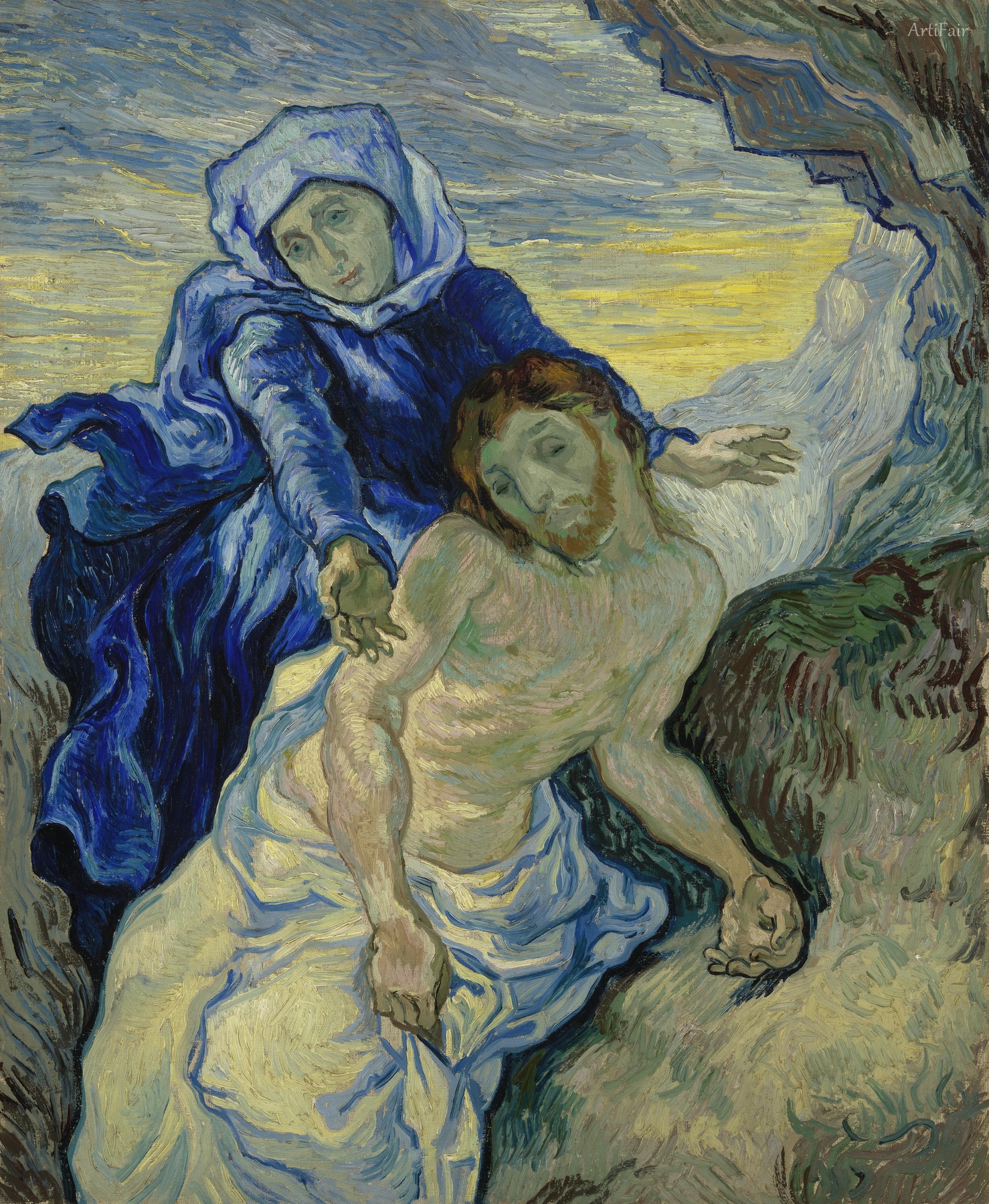
Art Appreciation
This captivating piece embodies profound emotional resonance through its tender representation of the Pietà, a well-known subject in Christian art. The central figures, mother and son, possess a raw vulnerability that captivates one’s attention; the slumped body of Christ, with its pale, cold hues, contrasts starkly against the deep blues and rich blacks of Mary's enveloping garment. One cannot help but feel the palpable sorrow and weight of grief exuding from the canvas, as Mary's loving embrace seeks to cradle and comfort her suffering child. Van Gogh expertly captures this moment of intimacy with vivid, swirling brushstrokes that contribute not only to the overall movement but also infuse the piece with an emotional undertone that resonates deeply with the viewer.
As the viewer gazes upon this interpretation of the classic subject, a sense of somber beauty emerges, drawing one into the depths of its composition. The painter’s bold use of color palettes—drenched in blues and earthy tones—suggests a world awash with emotion and spirituality. The layered textures evoke a sense of immediacy, making the figures feel strikingly alive as they grapple with pain and love. Contextually, created in 1889, this artwork echoes Van Gogh’s own struggles, reflecting both personal and societal themes of despair, compassion, and the divine. Through this work, one can discern the artist's intent to transcend mere representation and distill an essence of sacredness in human experience, making it a poignant part of art history.